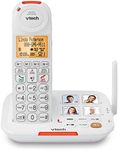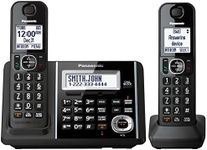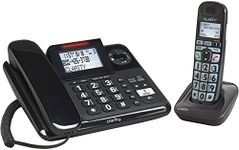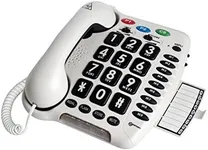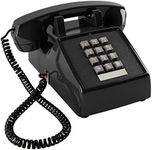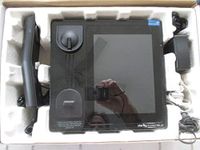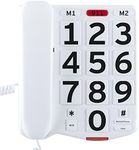Buying Guide for the Best Hearing Impaired Phones
Choosing a phone for someone who is hearing-impaired involves focusing on features that enhance sound clarity, volume, and accessibility. The right phone can make communication much easier and more enjoyable. When shopping, it's important to look beyond just the basic calling function and consider how the phone supports hearing needs, whether through amplification, visual alerts, or compatibility with hearing aids. Understanding the key specifications will help you find a phone that matches your specific requirements and lifestyle.Amplified VolumeAmplified volume refers to how much louder the phone can make the sound compared to a standard phone. This is crucial for people with hearing loss, as it helps them hear conversations more clearly. Amplified phones usually offer different levels of volume boost, often measured in decibels (dB). Lower amplification (up to 20 dB) is suitable for mild hearing loss, mid-range (20-40 dB) for moderate loss, and higher amplification (over 40 dB) for severe hearing loss. To pick the right one, consider the degree of hearing loss—if you struggle with regular phone volumes, a higher amplification model may be best.
Hearing Aid Compatibility (HAC)Hearing Aid Compatibility means the phone is designed to work well with hearing aids, reducing interference and making sound clearer. Phones are rated with an 'M' (microphone) and 'T' (telecoil) rating, usually from 1 to 4, with higher numbers being better. If you use a hearing aid, look for phones with M3/T3 or M4/T4 ratings for the best experience. If you don’t use a hearing aid, this feature may not be as important.
Visual AlertsVisual alerts are features like flashing lights or screen notifications that signal incoming calls or messages. This is important if you have trouble hearing the ringer or alerts. Some phones offer strong visual cues, while others may only have basic options. If you often miss calls because you don’t hear the phone, look for models with bright, noticeable visual alerts.
Adjustable Tone ControlAdjustable tone control lets you change the pitch or frequency of the sound, making voices clearer and easier to understand. Some people have trouble hearing high or low tones, so being able to adjust this can make conversations much clearer. If you find that certain voices are hard to understand, a phone with this feature can help you customize the sound to your needs.
Speakerphone QualitySpeakerphone quality refers to how clear and loud the sound is when using the phone hands-free. A good speakerphone can make it easier to hear conversations, especially if you have trouble holding the phone to your ear or need extra volume. Look for phones with high-quality, loud, and clear speakerphones if you prefer hands-free calls or need to share conversations with others.
Large, Easy-to-Read Display and ButtonsA large display and big buttons make it easier to see and use the phone, which is helpful if you have vision challenges in addition to hearing loss. Some phones offer extra-large buttons and high-contrast screens. If you find small buttons or screens difficult to use, prioritize this feature for easier operation.
